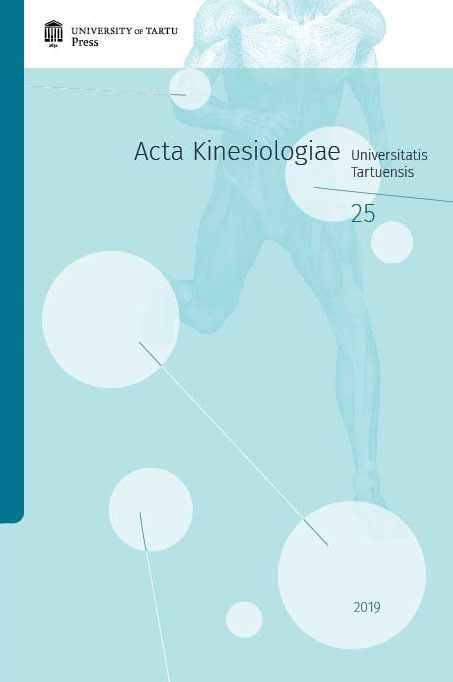Comparison of muscle activation and barbell kinematics during bench press with different loads
DOI:
https://doi.org/10.12697/akut.2019.25.03Keywords:
electromyography, EMG, resistance exercise, lower body strengthAbstract
The aim of this study was to compare barbell kinematics and muscle patterning in bench press with different loads, but with maximum effort, in young males with resistance training experience. Ten healthy experiences strength-training males (aged 27.3±5.9 years, body mass 82.8±16.6 kg, height 1.78±0.05 m, experience 7.3±4.2 years) performed maximal effort bench presses (1–2 repetitions) with loads varying from 30%, with 10% increments until 100% of 1-RM. Muscle activity of seven muscles and barbell kinematics were measured during descending and ascending phases. Average and peak upwards lifting velocity increased, while lifting time decreases with each decreasing load. In general, the maximal activation of most muscles decreases with decreasing loads, but it was not linear. No effect of loads was shown for the biceps brachii and posterior deltoid muscles. Based upon these findings, it was concluded that maximal lifting velocity may compensate for increased loads, which may allow resistancetrained males who are both healthy or in rehabilitation to avoid heavy loads but experience similar muscle activation. By decreasing the loads, the mechanical stress decreases and time to recover is reduced. Using lower loads with maximal lifting velocity may allow athletes to increase the total volume without increasing the risk of injuries.


